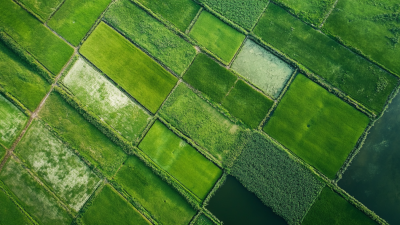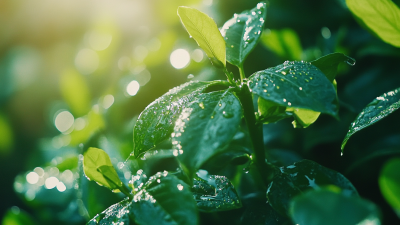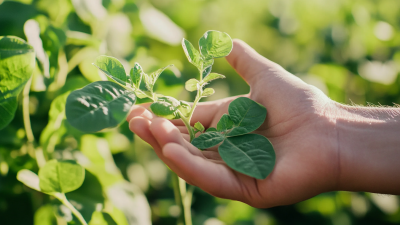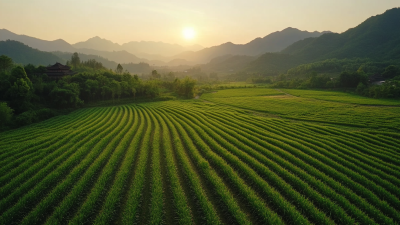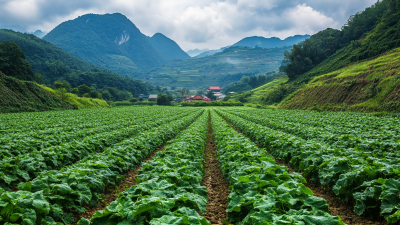 0551-68500918
0551-68500918 





Looking ahead to 2025, it’s super exciting to see how emerging technologies and sustainable agriculture are set to change the game for pesticides. Innovation Meiland (Hefei) Co., LTD. is leading the charge when it comes to developing new pesticide products, formulations, and processes. They’re really dedicated to harnessing these technologies to make agricultural practices better. By tapping into things like precision agriculture, biopesticides, and smart data analytics, we want to boost the effectiveness and safety of pesticides while also cutting down their impact on the environment. It’s crucial to understand how these tech innovations can really optimize how we use pesticides, especially as we work towards sustainable solutions that can meet the world’s food needs in the future. In this blog, we’re going to dive into the different emerging technologies that offer some real promise for transforming pesticide use and helping create a more sustainable agricultural landscape.

So, let’s talk about Chemical Pesticides and their role in sustainable farming. They’re pretty important! A report from the Food and Agriculture Organization (FAO) tells us that, around the world, these pesticides not only help keep pests at bay but can also boost crop yields by a solid 20-30%. That’s huge for food security! Looking ahead to 2025, we’re likely going to see some exciting advancements with things like precision agriculture and biopesticides. These new technologies will really change the game when it comes to how farmers use pesticides—think of it as getting more bang for their buck with way less impact on the environment.
On top of that, recent innovations in how pesticides are formulated are making them more effective while dialing back their negative impacts. For instance, some studies show that encapsulated Pesticide Formulations can improve the delivery right to the pests by as much as 50%. This means farmers don’t have to use as much active ingredient, which is definitely a win for sustainable farming goals. It helps keep chemical residues in the environment low and is safer for those non-target creatures we love, like beneficial insects. Plus, the growing trend of combining chemical and biological pest management is really showing us that the industry is moving towards smarter, more sustainable practices. By blending the best of both worlds, we can keep crops healthy and look after our planet at the same time.
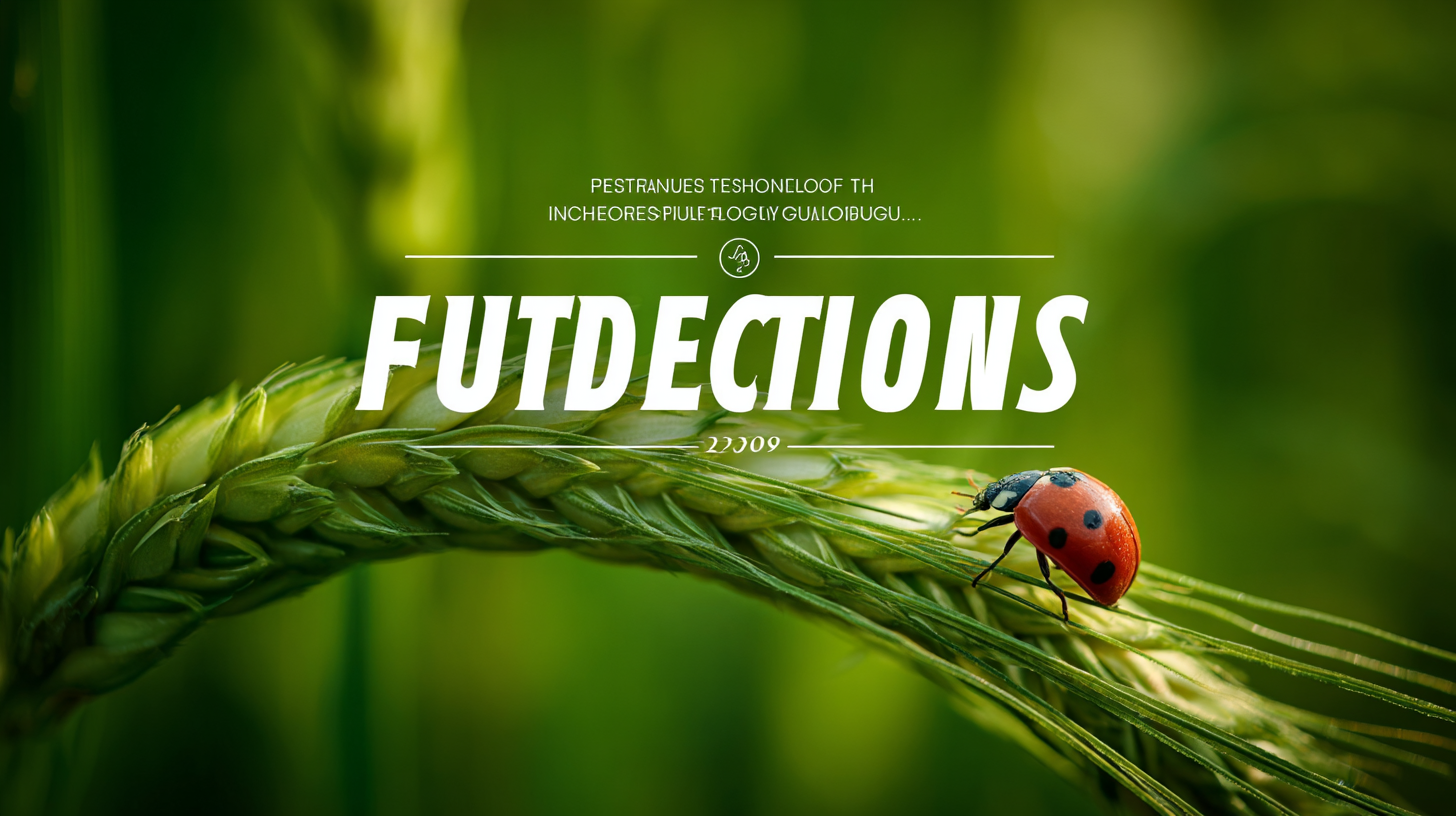
You know, biopesticides are really becoming a game changer for sustainable farming these days. They tap into the power of natural organisms to keep crops safe from pesky pests and diseases. Unlike those synthetic pesticides that can be harsh, biopesticides come from good ol’ natural substances, which is a relief for both our environment and our health. They work in a bunch of interesting ways—like interrupting the lifecycle of those annoying pests or boosting the plant's defenses. But, let’s keep it real; they’re not without their downsides. Things like a shorter shelf life and needing specific ways to apply them can be a bit tricky.
For all you farmers out there, if you want to get the most out of biopesticides, it’s super helpful to weave them into your pest management plan early on, right at the start of the cropping season. Keeping a close eye on pest populations is key, and if you notice any signs of trouble, don’t wait too long to apply those biopesticides for the best results. Oh, and make sure you store them properly to keep their kick!
A little tip: not every biopesticide is a good fit for every crop or pest out there. So, it’s really worth taking the time to do some research. If you can, chat with agricultural experts to figure out which products will suit your needs best. Pairing biopesticides with more traditional methods can really boost your overall crop protection while promoting a healthier ecosystem. It’s all about balance, right?
| Technology | Description | Advantages | Limitations |
|---|---|---|---|
| Microbial Biopesticides | Utilizes bacteria, fungi, or viruses to control pests. | Target-specific, minimal impact on non-target organisms. | Sensitivity to environmental conditions, may require frequent application. |
| Plant-Incorporated Protectants (PIPs) | Genes from biocontrol agents integrated into crop DNA. | Long-lasting pest protection, reduced chemical usage. | Regulatory hurdles, potential ecological impact. |
| Natural Plant Extracts | Extracts from plants that exhibit pest deterrent properties. | Biodegradable, multiple modes of action. | Variability in efficacy, possible phytotoxicity. |
| RNA Interference Technology | Employs RNA molecules to silence genes in target pests. | Highly specific, reduces resistance development. | Technical complexity, stability concerns in field conditions. |
| Nematode Biocontrol | Utilizes beneficial nematodes to control various pests. | Effective on soil-borne pests, environmentally safe. | Limited shelf life, sensitivity to handling. |
You know, precision agriculture is really changing the game when it comes to how we use pesticides. It’s all about making sure these important chemicals are applied more efficiently and in ways that are better for the environment. Today, thanks to things like data analytics, satellite images, and even drones, farmers can keep a close eye on their crops and apply pesticides exactly where and when they need them. According to the Food and Agriculture Organization (FAO), this approach can actually cut pesticide use by up to 25%. Can you imagine? That means less chemical runoff, which is a big win for our ecosystems! Plus, it helps farmers get better yields and pushes towards those sustainable farming goals, because they’re using their resources wisely without doing too much harm to nature.

If you’re looking to really optimize how pesticides are applied, using sensor technology to check on soil and crop health is a smart move. It’s like having a health check-up for the fields! This way, farmers can pinpoint exactly how much pesticide different parts of the field need. Also, having some solid weather forecasting tools can help choose the right time for application, so that the pesticides actually work better and last longer. When these strategies come together, they not only make pesticide use way more efficient but also promote responsible farming that respects the idea of sustainability. By bringing technology into the mix, farmers can boost their productivity while also being good stewards of our natural resources for the generations to come.
Integrated Pest Management, or IPM for short, is actually a pretty cool way to tackle pest control. It’s not just about spraying chemicals everywhere; it weaves together a bunch of different strategies to get the job done while being kinder to our planet. By mixing in biological, cultural, physical, and even chemical approaches, farmers can come up with sustainable solutions that really work for managing those pesky pests. The neat thing about IPM is that it doesn’t just focus on the current pest issue—it also helps strengthen our entire agricultural ecosystem over time.
One big tip for putting IPM into practice is to really embrace biodiversity on the farm. When farmers grow a variety of crops and choose pest-resistant ones, they can often keep those outbreaks at bay naturally. Plus, having good bugs around, like ladybugs and lacewings, helps too! They can swoop in and help with pest control without the need for chemicals. And, let’s not forget about regular monitoring—keeping an eye out for pests is super important. It helps farmers make smart choices about when to step in and how to tackle the problem.
And hey, let’s talk about technology! Using tools like precision agriculture can give IPM a real boost. Drones and satellite images can help farmers check their crops' health and spot pests early on, so they can jump in with targeted treatments. With data analytics in the mix, farmers can fine-tune their pesticide use, making sure they’re applying just the right amount at the perfect time. All these integrated techniques are paving the way for a greener, more sustainable farming future while keeping pest issues in check.
As we gear up for 2025, we're about to see some pretty amazing changes in the agricultural world, all thanks to the rise of smart pesticides. With technology advancing at breakneck speed, these new solutions are built to boost efficiency while being kinder to our environment. Think of smart pesticides as the brainiacs of pest control—they use data analytics, AI, and even real-time monitoring to target treatments precisely when they’re needed. This means fewer chemicals are floating around in our ecosystems, which is a win for everyone.
What's really exciting is how biopesticides and nanotech are coming together in this space. By tapping into natural substances and using cutting-edge delivery methods, today’s formulations not only help fight pests but also promote healthier soil and crops. Plus, the use of drones and sensors means farmers can keep an eye on pest activity like never before. Being able to jump in and take action right when it's needed leads to healthier crops and more sustainable farming practices overall. So, as we welcome these innovations, the agricultural sector is really set to boost productivity while also looking out for our planet.
You know, in the fast-changing world of agriculture, picking the right pesticide for specific crops really makes a huge difference when it comes to sustainable farming. With the world’s population booming and putting more pressure on food production, we’re seeing some pretty cool advancements in sensor technology that are shaking things up in how we farm. Recent reports show that these smart farming solutions using sensors can really boost how we monitor and apply pesticides, helping reduce chemical usage while also maximizing our crop yields and keeping them healthy.
Plus, there’s some exciting research going on aimed at pinpointing new pesticide targets. For example, scientists are sniffing out unique components in insect cuticles that are super important for things like moisture retention and detoxification. By getting a grip on how these mechanisms work, researchers can whip up new greener pesticides that are not only effective but also kinder to our environment. The crop protection industry is really on the rise in places like Europe, North America, and Asia, as everyone starts to realize just how vital sustainable farming practices are.
And let’s not forget about the big bucks going into precision agriculture, like software and data analytics. They’re essential for boosting how effective pesticides can be. Companies that are all about crafting innovative pesticide formulations are really leading the charge in this new wave, making sure that farmers have the tools they need to make smart choices that fit their crops perfectly. As we gear up for 2025, the way technology and sustainable practices work together will be key to making pesticide use in agriculture more efficient than ever.
: Chemical pesticides protect crops from pests and enhance yields by 20-30%, supporting food security initiatives.
Technologies like precision agriculture and biopesticides will lead to more efficient pesticide usage with minimal environmental impact.
Advanced formulation techniques, such as encapsulated pesticides, can improve targeted delivery to pests by up to 50%, reducing the amount of active ingredient needed.
Smart pesticides utilize data analytics and real-time monitoring to ensure targeted application, reducing chemical use and environmental impact.
These innovations harness natural substances and advanced delivery systems to enhance pest resistance while promoting soil and crop health.
Tailoring pesticide selection to specific crops helps achieve sustainable farming and maximizes crop yield while minimizing chemical use.
Scientists are identifying unique components within insect cuticles to design environmentally friendly pesticides that effectively target pests.
Precision agriculture enhances monitoring and precision in pesticide application, reducing chemical usage while maximizing crop health.
There is a growing focus on developing innovative pesticide formulations and processes that meet the demands of sustainable agricultural practices.
Farmers are employing drones and sensors to continuously monitor pest activities, allowing for timely interventions and healthier crops.

